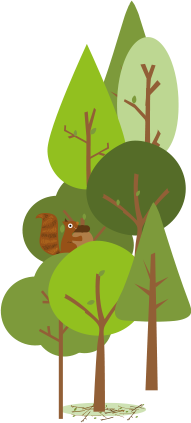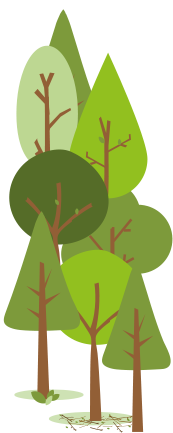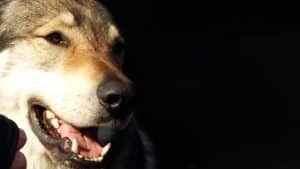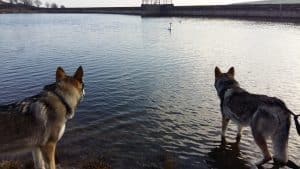

Wild encounters#1: Canis Lupus
22nd February 2017

For my first encounter I decided to start at the top, with the animal that to me embodies the spirit of the wild; the wolf. Wolves are native to the UK, however the last one in England was killed several hundred years ago, hunted to extinction thanks to an extermination agenda initiated to protect livestock and precious deer in the royal hunting reserves. The story goes that England’s last wolf was killed at Humphrey Head, a limestone outcrop on the Lake District peninsulas. Wolf descendants have now returned to Cumbria, in the form of a pair of wolf hybrids living as part of a pack with Daniel and Dee Ashman from the Predator Experience. On one of their ‘Walking with Wolves‘ experiences, I met Maska and Kajika, a stunning pair of male wolf hybrids; timber wolves with some Czechoslovakian wolf dog bred in to them, or as Dee described ‘as much wolf as you are legally allowed to keep in this country’.
I am fascinated by wolves and would love to see them in the wild, but on this experience I had the chance to get up close and interact with them, in as much as you can interact with a 40kg animal with all its wild instincts intact. We were shown how to properly introduce ourselves by letting them sniff our hands, and that was all that was required to be accepted into the pack and set off on a walk together. The wolves are not allowed to run free, which was understandable given their powerful hunting instinct. Even with 2 of us holding the lead, I was aware of the huge strength that was pulling us along. This was definitely not like walking the dog. Daniel and Dee explained how their animals differ from domestic dogs, who even as adult animals are basically arrested in their development at the stage of a 45 day old wolf pup. Unlike dogs, wolves see no need to please or play; every action is driven by their powerful instincts to work as a pack unit to hunt and survive.

On the way back down we discussed the reintroduction of wolves. This has successfully happened in Yellowstone Park in America, where bringing back a keystone species has had a positive effect on the biodiversity, as deer and elk are forced to retreat from open country, allowing the regrowth of plants which in turn increases other species populations. Sadly however I learnt this would not be possible in the UK as our lack of wilderness area means there is not sufficient space to support the number of wolf packs needed to prevent interbreeding.
After saying goodbye to Maska and Kajika, we left to walk our own very domesticated wolf descendent (our greyhound Jet), deciding to visit nearby Humphey Head. Standing at the bottom of the cliff looking out across the estuary, it was poignant to imagine the last wolf cowering amongst the rocks as it was hunted down to its bloody demise, a sad end for a beautiful and powerful creature with whom we will not share this country again, but who can teach us a lot about our relationship with nature.

